It is becoming increasingly harder to recruit the best talent, and even when you have managed to identify the best candidates, getting them through the whole process to enter your team can sometimes uncover massive stumbling blocks in your recruitment process. That’s why it’s essential to understand your recruiting funnel and know the necessary tricks and tips to be able to optimize your efforts.
In this guide we are going to take a closer look at what a recruitment funnel is, the steps and structure behind one, recruitment funnel metrics and how you can best optimize your funnel to attract the best candidates to your organization.
What is a recruitment funnel?
There isn’t a standard definition of a recruitment funnel however, there are several processes which commonly take place in order to create what is usually referred to as, a recruitment funnel.
A recruitment funnel is a framework which represents the entire stages of the hiring process. At the top of the funnel is where you have all the possible candidates for a given position and at the bottom, the narrowest part is the new hire.
This is not too dissimilar from a sales funnel which is commonly used in sales.
A recruitment funnel is built up of these different stages which when combined whittle down the list of potential candidates to hire. Each stage is covered in the next section.
Recruitment funnel steps and structure
The recruitment funnel is a step-by-step process of getting the applications down to the eventual hire. Each step is clearly defined with outcomes to proceed onto the next stage.
You may have an opening for one role, but over two hundred candidates apply. This is where the recruitment funnel demonstrates how that process can whittle down the number of candidates to the final hire.
Level 1 - The career website
For many, the recruitment process begins now at the career website. This is the essential start of a brand journey and one where the organization gets to demonstrate its value and worth to new employees.
Part of the employer branding exercise, the career website wants to be able to attract the best talent and one of the ways of doing this is by showing potential employees what the values and the culture of the organization are and how staff appear to feel about working there.
At this stage you also want to be able to discuss the employee value proposition. Your Employee Value Proposition is really the message that you will target your candidate with. An employee value proposition should tell potential candidate’s why they should come to work for your company.
Think of it as, “What’s In It For Me” (WIIFM). It’s more than just a great salary, it includes the typical high value benefits that are financial and beyond to attract the best talent to your organization.

Level 2 - Application process
Whilst many applying for your job will know about your organization and the brand - even your values - many others will not. However, that shouldn’t deter people from applying. They may have the skills and the knowledge to be successful in your organization.
Therefore you want to be able to make the application process as simple and streamlined as possible. This is for both sets of applicants. Why? The harder or more difficult it is to apply, the less likely you will have people applying.
Psychometric tests can help improve this process. It does not rely on candidates knowing information about your organization but insteads highlights whether they have the skills and attributes required to fit the role and work with the rest of the team.
Level 3 - Interview
After applications and screening - which AI can help with - you can use the final list to start calling in interviews with candidates. First interviews can even be carried out with AI bots to establish if the candidate has the necessary skill levels or you can use AI to send across personality assessments to get more information before proceeding any further.
Being able to nurture and maintain the relationship with the organization and the applicant is key. Taking time on selecting a candidate is understandable but if it takes too long that can have a negative impact, or taking too much time without communication can make the candidate feel quite bitter about the experience and choose to drop out.
Level 4 - Offer
The offer is one of the most important and worrying times of the recruitment funnel for organizations. A lot has been done to this point to go through the entire process and select this person, and now it’s time for this person to accept, negotiate, or reject the offer outright.
Knowing what competitors are offering can be key in this phase but also, how transparent you’ve been about salary expectations or where they will be working can have a massive impact on the decision. How appealing is the job now after all of that work?
Final level - Hiring
Finally, you’re at the hiring phase. It doesn’t stop when you’ve sent the job offer through and they’ve accepted your offer. The recruitment funnel is about the things that come after it as well.
Things like onboarding and assessing the candidate’s experience of the recruitment funnel process is essential as they can give insight into how well it is working but also, what the learning curve is for any new recruit.
Recruitment funnel metrics
When digging deeper into the recruitment funnel process, you want to be able to understand what you’re specifically looking for in terms of the metrics which can be taken from the total process.
By doing so, you can better engage your teams to identify, fix and optimize the funnel in different areas or in one specific area.
Here are some of the more commonly used Recruitment Funnel KPIs.
Quality of hire
This is a qualitative assessment of how well you have filled your position in your organization.
If your organization is hiring from many different sources - i.e. recruiters, linkedIn, direct applications - how are you going to measure the quality of each recruit and then apply a strategy to find equally good candidates if you don’t know where they are coming from?
Time to hire
This is a Quantitative assessment which analyzes how long it took to get someone hired.
Time to Hire refers to the amount of time that passes between when a job candidate is initially contacted by a company and when they accept the employment offer. This is often confused with time to fill, which measures the number of days it takes to fill an open position. The use of an average Time to Fill metric is widely used but again, this varies from Time to Hire.
Cost per hire
Again, another quantitative assessment which looks at the actual or estimated cost of each new hire. It should include things like:
- Advertising the vacancy on job sites,
- referral fees
- The time the recruitment team spends on it
- Onboarding and interview time,
- Any employee training and new equipment cost
Hiring diversity
Using demographic surveys to assess conversion rate of employees from specific identity groups (e.g. LGBTQIA) entering your recruitment funnel and being hired.
You can calculate this by taking the number of represented diverse categories divided by the number of total staff to give a total percentage.
Candidate experience
The Candidate Experience also known as the Net Promoter Score is a KPI which measures the applicant/candidate experience during the recruiting process.
The more positive the experience the better it is for your long term future and vise versa.

How to optimize your recruitment funnel
Being able to use the KPIs is one thing but knowing what to do with that information is a completely different thing altogether. You want to be able to take the information provided and in turn find ways to optimize your recruitment funnel.
Here are some of the most easy and effective ways to do so.
Clearly define and describe your recruitment funnel
Firstly, have you acknowledged that you need a recruitment funnel to begin with? Once you have, you can start to clarify all of the steps involved in creating one specific to your business.
Think carefully about what each step involves, why it’s important and what the expected outcome of each step is.
When selling this into your management team, make it easy to use, and easy to understand.
Derive buy-in from all stakeholders
You want every part of your funnel to succeed which means, getting buy-in from your stakeholders. You need to highlight the importance of transparency in the process - get input and contributions from each team to ensure that it works well.
If you have a well designed funnel but a part of it doesn’t work thanks to a manager or a team member holding it back, it will fail.
Identify areas where automation is beneficial
Automation can be a big bonus in this phase. From reading and evaluating CVs to sending out assessments, automation can streamline the process and leave candidates with a better understanding and experience of your organization and the process.
Standardize processes with operating procedures
Your recruitment process is an essential part of your organization’s strategy to grow and to develop. That means that every step in the funnel should have clearly defined procedures.
There should also be standardized processes for the treatment of candidates to ensure consistency and promote their experiences.
This will also eradicate errors and limit bias after automation and AI have done so in many areas of the application process anyway.
Identify areas for minimization
What you want to do is to provide a system of making the candidate experience all the better. Simplifying and minimizing the amount of time and effort per candidate is going to be essential.
Look for areas in which things can be cut down/ reduced (e.g. fewer interviews and task based challenges) Think about CV collections, answering questions which have already been asked, background checks or screening. These are all things that can be put onto the system and not have to go through the candidate.
Prioritize candidate experience
If you think about candidates as customers, it is a useful way to recognize the importance of their experience.
What are they gaining from interacting with you? What are you learning about the relationship between you and them? What can you make better or provide extra value? You would do this for a customer, so why wouldn’t you for a candidate?
In summary
Organizations of all sizes, whether they realize it or not, will be using a recruitment funnel. Large organizations will have refined and honed theirs to include many different aspects of candidate capture and selection, but that’s not to say small or medium businesses shouldn’t be thinking about it as well.
Optimizing recruitment funnels is beneficial for organizations as it can save time, money and give insights into what is working and what is not.
Using the Thomas Recruitment Platform you can get a clear insight into the different KPIs and optimize your recruitment process to find and attract the right candidates to your organization.





